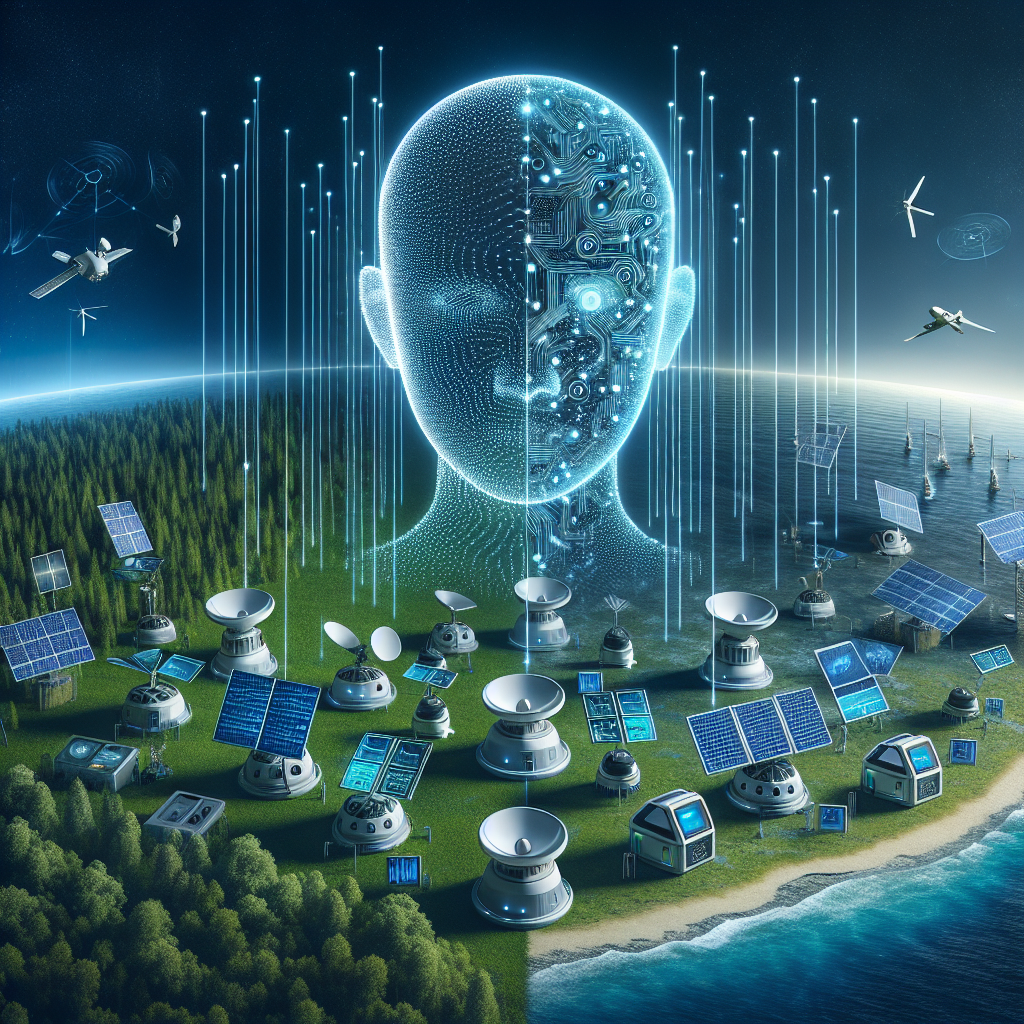In recent years, the use of artificial intelligence (AI) has become increasingly prevalent in a wide range of applications, from healthcare to autonomous vehicles. One area where AI is making a significant impact is in real-time environmental sensing. By leveraging AI algorithms, sensors can collect and analyze data in real-time, providing valuable insights into environmental conditions and helping to monitor and mitigate environmental issues.
Real-time environmental sensing is crucial for a variety of reasons, including monitoring air quality, detecting pollution, and tracking weather patterns. By using AI to analyze the data collected by sensors, researchers and policymakers can gain a better understanding of environmental trends and make more informed decisions about how to protect and preserve the environment.
One of the key advantages of using AI for real-time environmental sensing is the ability to process large amounts of data quickly and accurately. Traditional methods of data analysis can be time-consuming and labor-intensive, but AI algorithms can analyze data in real-time, allowing for faster and more efficient decision-making.
Another advantage of using AI for real-time environmental sensing is the ability to detect patterns and trends that may not be immediately apparent to human observers. By analyzing data from sensors in real-time, AI algorithms can identify correlations and anomalies that may indicate environmental issues or trends, allowing researchers to take action before problems escalate.
There are a variety of ways in which AI can be leveraged for real-time environmental sensing. One common approach is to use AI algorithms to analyze data collected by sensors, such as air quality monitors or weather stations, in order to detect patterns and trends. By analyzing this data in real-time, researchers can gain valuable insights into environmental conditions and make more informed decisions about how to protect and preserve the environment.
Another approach is to use AI to control sensors and other monitoring devices in real-time, adjusting their settings or locations based on the data they collect. For example, AI algorithms could be used to optimize the placement of air quality monitors in order to ensure that they are collecting data from the most relevant locations.
AI can also be used to predict future environmental conditions based on current data. By analyzing historical data and current trends, AI algorithms can make predictions about future environmental conditions, allowing researchers to plan ahead and take proactive measures to protect the environment.
Overall, leveraging AI for real-time environmental sensing has the potential to revolutionize the way we monitor and protect the environment. By using AI algorithms to analyze data in real-time, researchers can gain valuable insights into environmental conditions and make more informed decisions about how to protect and preserve the environment.
FAQs:
Q: How does AI help in real-time environmental sensing?
A: AI algorithms can analyze data collected by sensors in real-time, allowing researchers to gain valuable insights into environmental conditions and make more informed decisions about how to protect and preserve the environment.
Q: What are some examples of real-time environmental sensing applications?
A: Examples of real-time environmental sensing applications include monitoring air quality, detecting pollution, tracking weather patterns, and predicting future environmental conditions.
Q: What are the advantages of using AI for real-time environmental sensing?
A: The advantages of using AI for real-time environmental sensing include the ability to process large amounts of data quickly and accurately, detect patterns and trends that may not be immediately apparent to human observers, and predict future environmental conditions based on current data.
Q: How can AI be leveraged for real-time environmental sensing?
A: AI can be leveraged for real-time environmental sensing by analyzing data collected by sensors, controlling sensors and monitoring devices in real-time, and predicting future environmental conditions based on current data.

